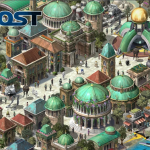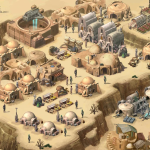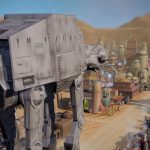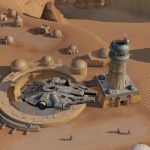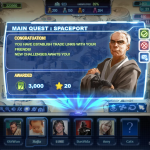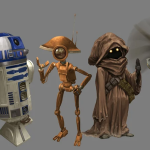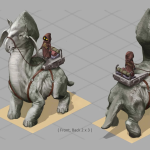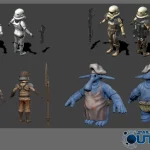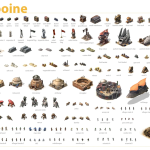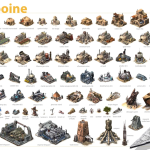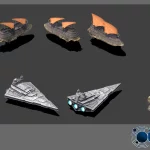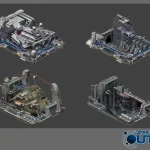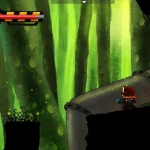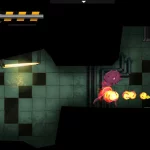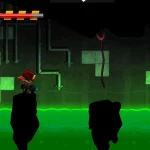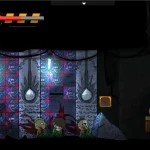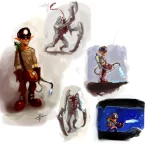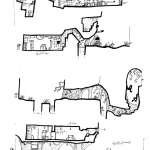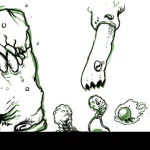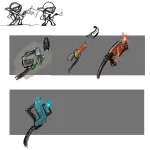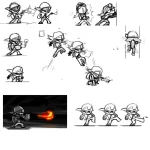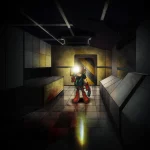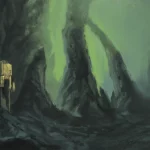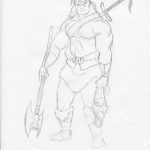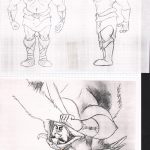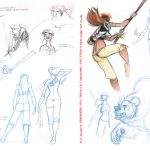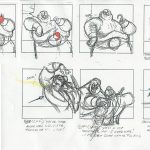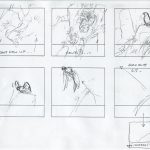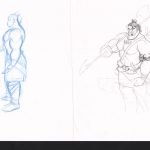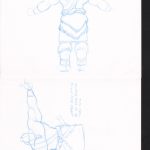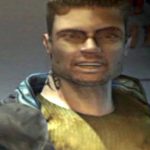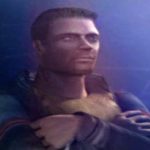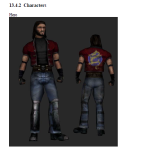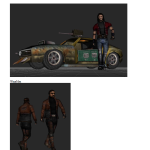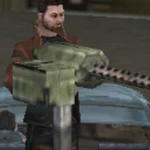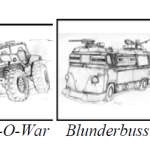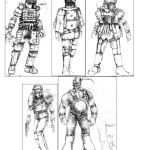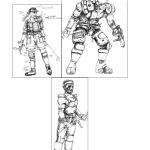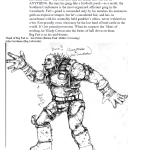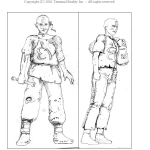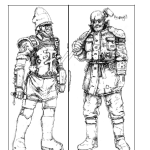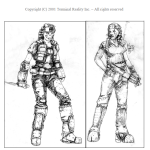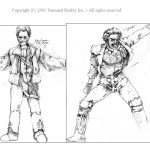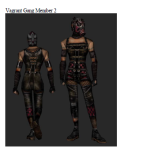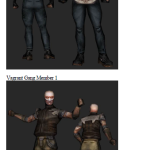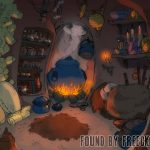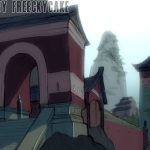Star Wars Outpost is a cancelled Real Time Strategy/simulation social network hybrid game developed from 2011 to 2012 by LucasArts Entertainment Singapore for browsers based PC and mobile devices. It was based on the eponymous movie franchise.
The existence of Star Wars Outpost was revealed after its cancellation alongside many others cancelled Star Wars related project during the closure of LucasArts, back in April 2013. At first, it was initially briefly mentionned by an article from Kotaku wrote by Jason Schreier back in September 2013, when we simply could read this:
The list of cancelled projects goes on and on. (…)
There was Outpost, the Star Wars take on Zynga’s FarmVille that would let players build empires, one click at a time.
It is only in January 2016, almost 3 years after the shutdown of LucasArts, that more details, alongside a couple of artworks, about the game emerged. Eurogamer was the first to relay those information:
A long time ago, before Disney‘s acquisition of Star Wars, LucasArts spent two years developing a “hardcore” strategy simulation for PC and mobile devices. And then it quietly cancelled the project, four weeks from completion.
This game was Star Wars Outpost, which was being built by a team of 30 working out of LucasArts’ Singapore office.
We were told Outpost was canned shortly before Disney’s acquisition – at which point other Star Wars games were halted, too. (…)
If you’re thinking you’ve heard Outpost’s name before, then you’re right – reports on the canning of 1313 and First Assault mentioned this third game, although at the time it was only referenced in the vaguest of terms – and described as a Farmville clone.
“The previous leaks mentioned a social game that was supposed to be Star Wars’ answer to Farmville,” the tipster said. “This is absolutely wrong.
“The people who thought [Outpost was a] Farmville game were from the US office. They had no idea about this game either – except just a few key people. This was being made 100 per cent in Singapore.”
At the time of its cancellation, Outpost was “about 90 per cent done”.
“We were just looking for approval to start public beta testing. Instead we got a call they were going to kill the project.”
Rather than a social game clone, Star Wars Outpost was designed to be a “very hardcore” experience. And despite the fact it might look like a game you’d find on Facebook, the title was canned because it was considered too niche.
“The best way to describe the game is if Star Wars met Settlers of Catan/EVE Online,” said the source. “You would take control of an Outpost on a planet within [the Star Wars galaxy]. The land on the planet was finite and so were the resources, so you were forced to search out and find other players. You had choices to either work with them or betray them for their resources.
“You could then start supplying weapons/ships/tools etc. to either the Rebels or the Empire. Supporting each side would control a balance of power where that side could start taking over the Galaxy.”
Nearby players who were allies would slowly become connected to you via networks of roads and trade routes. A world completely controlled by the Rebels or Empire would grant bonuses to the appropriately-aligned Outposts on it.
“It was a very deep game and always running like an MMO, we wanted players to really invest a lot in time,” the source continued.
Outpost also had a working day/night cycle, and an overworld populated by characters who would wander around and interact with the settlements and other characters in it.
But despite its hardcore aspirations, LucasArts was building the game to be as accessible as possible – coded in HTML5 and playable via a browser.
“We did it in 3D but everything was hand painted by artists to make sure we had a nice art style.”
There were deeper plans for Outpost, too. The game’s original design was for it to connect with Star Wars: First Assault, and allow you to create weapons or ships for use in the shooter.
“We had the back-end working but not in-game,” said the source. “Then the players from First Assault could buy those unique weapons and equipment. You could also send in dropship supplies to help a side during the fight.”
All of which makes it more of a shame we’ll never see Outpost. After the game’s cancellation its team was moved on to casual mobile games (“which all got killed also right at the Disney purchase”) while a few were shuffled onto the similarly-defunct Star Wars 1313. After two years of work, Outpost was dead.
In May of the same year, a short trailer showcasing some gameplay leaked onto the internet. According to the main source, the video was part of larger vertical slice demo that’s yet to be found:
When LucasArts still was a company not acquired by Disney, a real time strategy (RTS) Star Wars game was about to be released on PC and mobile devices.
(…)
Now, thanks to Elise Baldwin, who was the Audio Director on Star Wars Outpost, we are able to see a slice demo illustrating the combat mode of the game:
I was the Audio Director on this unannounced title which did not make it to marketplace. It was in development for over a year, during which time it went through three platform/engine pivots. It featured a simulation mode and a tactical combat mode. This video was part of a vertical slice demo illustrating the combat mode.
The death of LucasArts was truly a tragedy for many people, starting with the numerous employees worldwide who were laid off, and many projects, whether or not based on Star Wars, were cancelled both before and during the acquisition by Disney. In addition to Star Wars Outpost, and Star Wars 1313 and First Assault already mentionned above, we can add:
- a game based on Indiana Jones
- a 2D physics-based shooter called Caveland that was meant to be an experimental digital title
- Smuggler, a game designed for cross-platform multiplayer that would let you play as a customizable character within the Star Wars universe, smuggling and trading between Facebook, tablets, and consoles
- An iOS game called Death Star in which you’d get to control your very own version of the Empire’s space station
- A Wii U project code-named Wingman that was modeled after the TIE Fighter and X-Wing games. This project would later evolved as Star Wars: First Assault “Version Two” which featured prototypes and elements that didn’t go to the “Version One”.
- A Star Wars based open world RPG that was led by Clint Hocking
- A Star Wars take on Grand Theft Auto that was based on a cancelled live action TV show named Star Wars: Underworld. The project would later change direction and evolved as a co-op shooter game similar to Gears of War, that would eventually lead to the first design of Star Wars 1313.
In the recent years, a tech demo of First Assault, alongside the complete Nintendo Wii version of Star Wars: Battlefront 3 leaked online. We can hope that, some day, others cancelled projects may be made available online to allow players to test them or learn more about them.
Images:
- 3D model provided by 3D Artist Sean Tay
- 3D model provided by 3D Artist Sean Tay
- 3D model provided by 3D Artist Sean Tay
Video:



